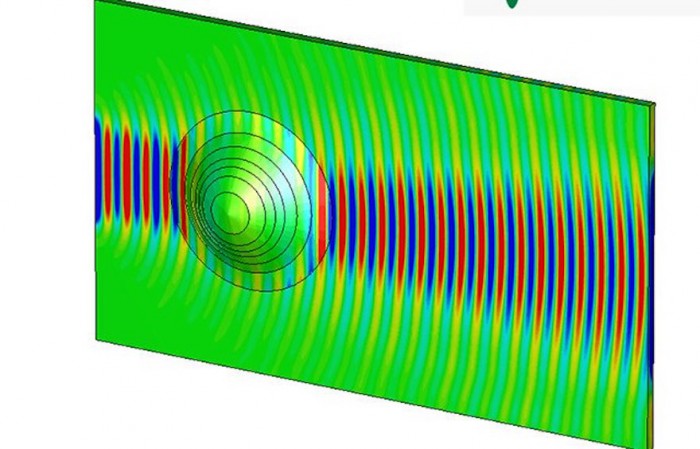
Scientists at Queen Mary University of London (QMUL) are one step closer to creating an invisibility cloak. While it won’t be like the invisibility cloak made famous in J.K Rowling’s Harry Potter novels, researchers believe the breakthrough can lead to the development of new technological and industrial solutions in the design of real-life platforms, for a range of different applications.
"The design is based on transformation optics, a concept behind the idea of the invisibility cloak,” said Co-author, Professor Yang Hao from QMUL's School of Electronic Engineering and Computer Science. "Previous research has shown this technique working at one frequency. However, we can demonstrate that it works at a greater range of frequencies making it more useful for other engineering applications, such as nano-antennas and the aerospace industry."
The researchers held the first practical demonstration of a cloaking device that allows curved surfaces to appear flat to electromagnetic waves. They demonstrated this by making an object disappear. According to the paper, they used a composite material with nano-size particles that can enhance specific properties on the object's surface. The effect is to “cloak” the object.
"The study and manipulation of surface waves is the key to developing technological and industrial solutions in the design of real-life platforms, for different application fields,” said Dr Luigi La Spada also from QMUL's School of Electronic Engineering and Computer Science.
"We demonstrated a practical possibility to use nanocomposites to control surface wave propagation through advanced additive manufacturing. Perhaps most importantly, the approach used can be applied to other physical phenomena that are described by wave equations, such as acoustics. For this reason, we believe that this work has a great industrial impact."
In 2015, scientists at UC Berkeley created a tiny invisibility cloak. The thin metamaterial could conform to irregularly shaped objects and render them invisible in certain wavelengths of light. While it was deemed impractical because of its size, the device was said to be proof of a concept that could be scaled up in the future.






